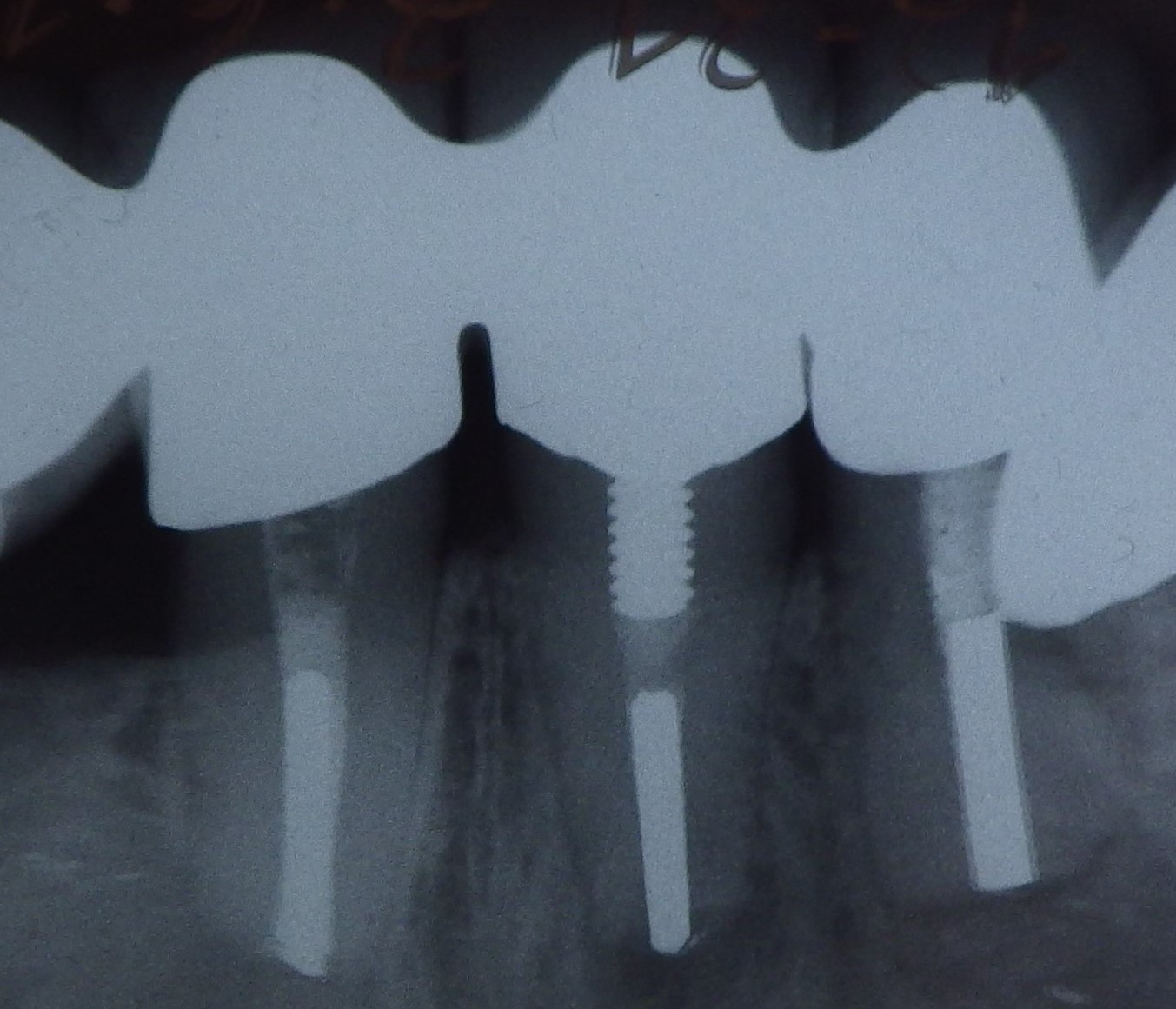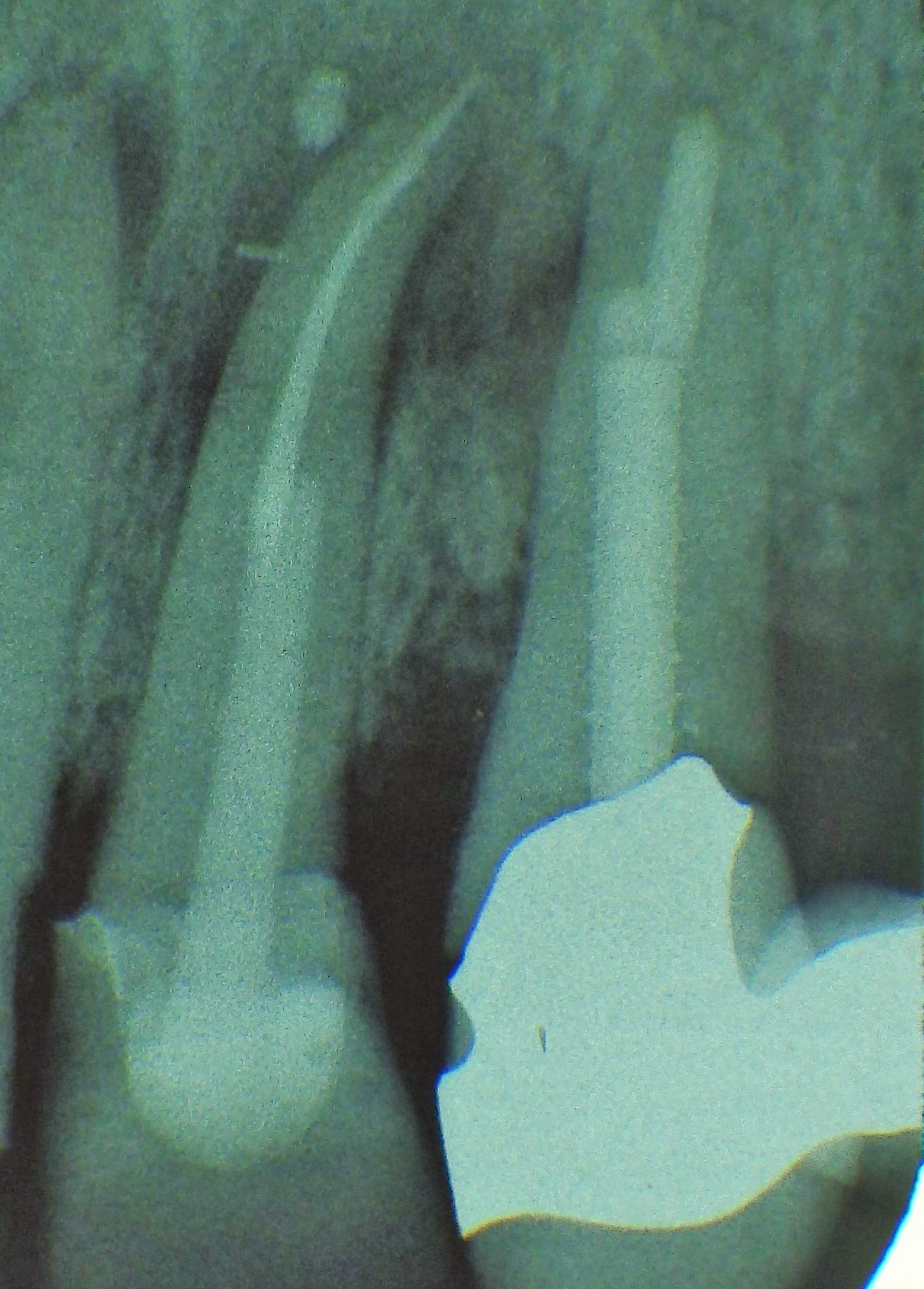Root canal post
Root canal posts are inserted centrally into adequately long, straight sections of devitalised, root-filled teeth which show no pathological findings either clinically or radiologically. Severe vertical and horizontal structure loss from the clinical crown is an indication for root canal posts. The preferred method is generally to insert the root canal post, so that it (by predrilling with ascending diameters) virtually fills the prepared post site and fits close to the dentine wall. That section of the root canal post in the root should be at least as long as the crown restoration, leaving a few millimetres of the root canal filling to seal the apex. Isolated concepts have also been developed with smooth metal posts projecting apically beyond the tooth and intended for anchoring in the bone (transdental fixation).
 Three different root canal posts
Three different root canal posts
Restoration with a temporary post is seldom practical due to the increased fracture and reinfection rate; a definitive root canal post should be inserted as early as possible.
Conventional conical (root-shaped) or cylindrical root canal posts are mainly made from metal alloys. Prefabricated root canal posts, e.g. manufactured from steel or titanium are rarely smooth, but often have a screw thread to provide anchorage in the dentine and escape channels for conventional luting cement as well as a retentive head for building up a core. In addition to rigid root canal posts, flexible posts are available for adapting to the coronal anatomy.
 Tooth 14 conical and smooth, tooth 13 cylindrical and threaded
Tooth 14 conical and smooth, tooth 13 cylindrical and threaded
Customised root canal posts (often made from precious metal alloys), cast after waxing up directly in the root canal or indirectly after taking an impression of the root canal lumen (using burnout posts), can also be used for filling lumina with oval or irregular cross sections, as well as two or three divergent canals each fitted with a post inserted, if necessary, through the opening of another canal. The core build-up(s), or even the entire crown (historically: post crown) can be integrated.
Up to about the end of the 20th Century root canal posts (also called endodontic posts) were still regarded as a standard, stabilising reinforcement of a root-filled tooth, which would generally be crowned later. In the meantime, the tooth structure of devitalised teeth is known to be just as stable as that of vital teeth. Its increased fracture susceptibility is only caused by mechanical weakening due to loss of tooth structure; a root canal post therefore does not increase the strength.
Today, mainly conical (prevents excessive weakening of the remaining tooth wall apically) and smooth, rotationally symmetrical (in order not to build up any compressive or tensile stresses) root canal posts are inserted. These are often no longer manufactured from metal but mainly from glass-fibre resin composites and, more seldom, carbon fibre or zirconia. This makes them highly suitable for the predominant adhesive anchorage in root canals using silanization and, if possible, (due to problematic light access) chemical or dual-curing adhesives and luting composites. The main function of modern root canal posts is to enlarge the retentive surface for restorations also retained adhesively on the residual tooth structure (mainly with a circumferential retentive rim of approx. 2 mm vertically). The fibrous structure also provides a certain flexibility, which corresponds to that of dentine and therefore prevents cracking of the root created by coronal leverage forces on the one hand and loosening ("nail-pulling effect") on the other. These two phenomena were previously the main causes for failure of post restorations.
Glass-fibre posts can be removed relatively easily; the fibres function as guide rails for the respective rotary instruments.
PROBIEREN SIE ES EINFACH AUS !!!
Von uns erhalten Sie professionelle Unterstützung.
Treten Sie mit uns in Kontakt oder nutzen Sie unser Kontaktformular.
Wort des Tages
| Deutsch | Englisch |
|---|---|
| Gussküvette | casting ring |
Schwerpunkttext des Monats
Vergrößernde Optik in der Zahntechnik Vergrößernde Optik in der Zahntechnik |
